Seeing the Sights
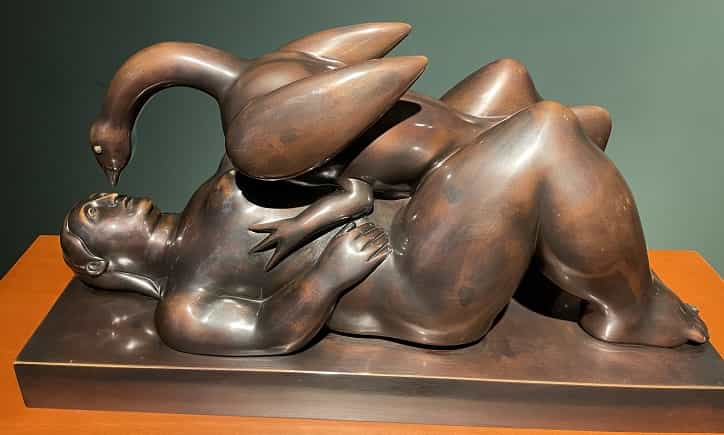
Justin Hauver
At the end of July, a friend of ours came to visit for several days. We had just gotten settled in and so we were excited to host a visitor, show her what we knew about the city, and, most of all, experience a few new things together.
Have you ever lived in a place and never done any of the super touristy things? For us, it’s easy to settle into a rhythm, thinking that there is plenty of time to see what a place has to offer, and then realize too late that you missed out on some cool things. Of the top 10 things to do in Sacramento, our previous home, we only did 3 of them. The numbers are similar for San Jose, where we lived for three years!
Of course, the point here is not that you must do the touristy things to truly understand a city. In many ways, just the opposite is true since daily life is lived on ordinary buses, in neighborhoods that don’t rank on many famous lists, and through casual interactions with the people who constitute the city. Still, it’s interesting to visit the sights that are upheld as symbols of history, culture, and natural beauty. Catherine’s visit was just what we needed to get out there and see these places.
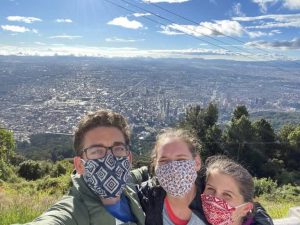
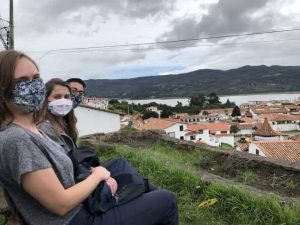

El Dorado
The legend of El Dorado has many iterations across time including, Abbey tells me, a Disney movie. At its essence, it’s about vast quantities of gold: a man of gold, a city of gold, maybe even an entire empire of gold. European conquerors tried in vain for centuries to find this rumored source of wealth. During Catherine’s visit, we went to three places that touched on this legend.
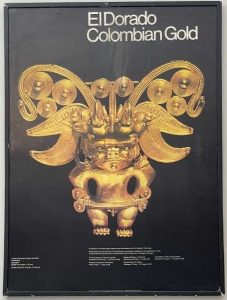


The Gold Museum
The Gold Museum is one of Bogotá’s most famous attractions, and for good reason. It is home to a huge collection of golden artifacts molded into jewelry, funeral masks, instruments, and more. Overall the museum is very well done, with pieces beautifully arranged in quiet, softly lit rooms. The atmosphere evokes a sense of serene wonder and reverence for the cultures that created the intricate works of art on display. Walking room to room, you travel through Colombia’s history and across it’s geography, accompanied by scattered details of the people who lived hundreds or thousands of years ago.
My favorite exhibit at the museum was The Offering, a multi-room immersive experience that centers on a sacred, golden offering. In the Muisca religion, gold was seen as the embodiment of the sun, the one creator. To pay tribute to that god, one clan chief not far from Bogotá would cover himself in golden dust, sail out onto the middle of a holy lake, throw offerings of gold and jewels into the water, and then finally dive into the lake himself as a symbolic sacrifice. El Dorado, the golden man, whose essence floated in tiny particles to the bottom of the lake as an offering to god.
The Offering exhibit stirs up elements of this sacred ceremony. As you walk into first room the lights dim and you can hear human voices chanting in the background. The artifacts are embedded into the different sides of large pillars, forcing you to repeatedly turn in circles as you walk through the space. The chanting continues. The next room is dark and circular with what seems to be a glowing, blue hole in the center. As you approach, the door quietly rotates shut. The chanting intensifies, amplified by lights that softly, slowly, rhythmically illuminate golden treasures suspended against blue walls on all sides, sinking down into the depth of the lake, taking you with them into a different world, one long past that lives on into the present day. It’s a cool experience and a great museum.
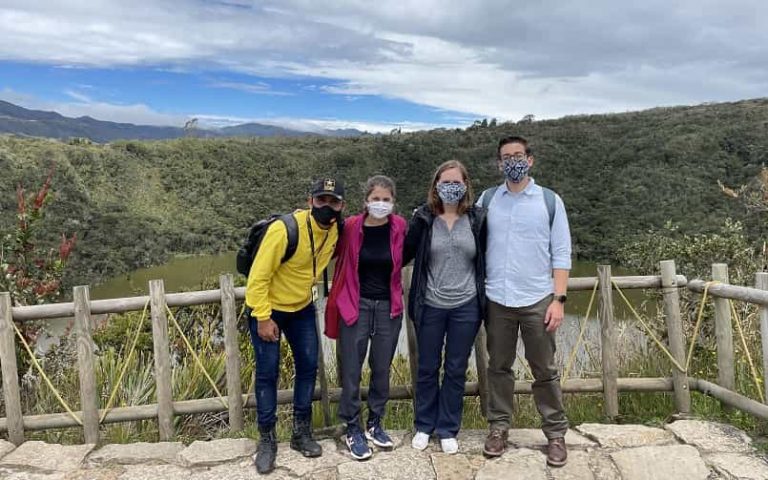
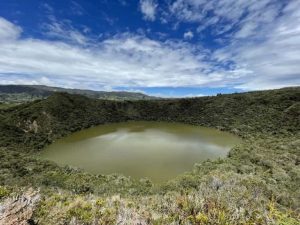
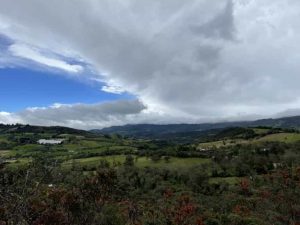
Guatavita Lake
The day after visiting the Gold Museum, we went with a tour guide, Luis, to visit the lake where the ceremony of El Dorodo was once performed. After an hour or two of driving up mountains and past beautiful views of the countryside, we arrived at Guatavita Lake. There we joined a group to be led to the lake by an official guide. Luis warned us that conservation is taken is very seriously there. Once he was reprimanded for breaking a single leaf of rosemary to confirm its smell.
I was struck almost immediately by the approach of the official guide, Clara. Before we started the hike up to the lake, she worked to draw us into the place, its history, and its significance. Sitting in a socially distant circle, she asked us to close our eyes and to imagine a fire at the center of our group. As I closed my eyes, she spoke of her ancestors’ beliefs and asked us to throw any negativity into the fire so we could proceed to the holy site cleansed. We opened our eyes, hugged those we knew, and started our way up to the lake. Clara didn’t want us to just visit or to just learn about the site, she wanted us to experience it, to appreciate it, and to honor it.
On the way to the top of the mountain, Clara stopped us frequently so that we could catch our breath and so that should could share more about the history of the lake. At the summit we took in beautiful views and I managed to embarrass both Abbey and Luis by getting into a slight disagreement with a tour guide about who was a worse president, Santander or Bolívar. Then we made our way to lunch to final stop of the day.
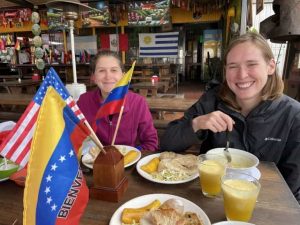
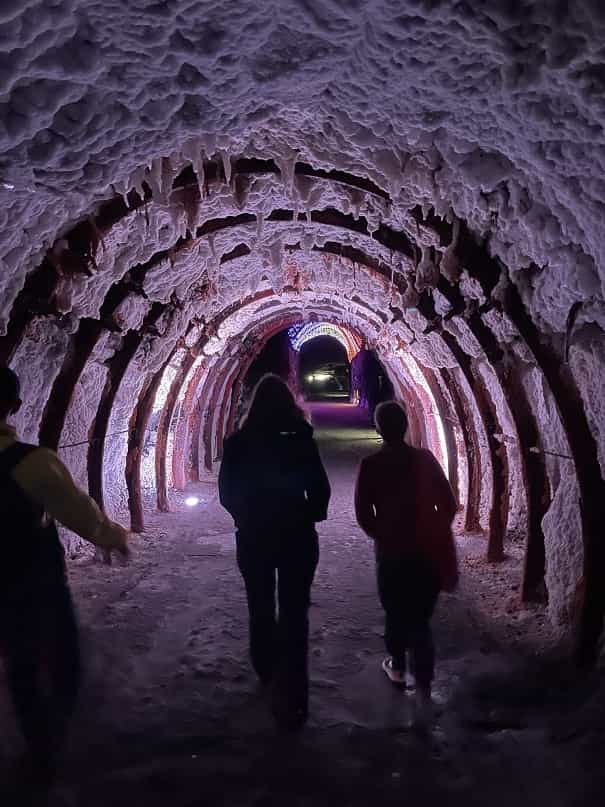
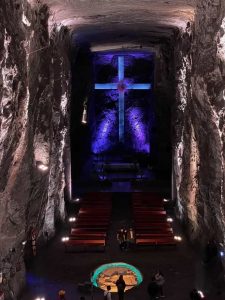
Zipaquirá
Despite the Gold Museum and the El Dorado ceremony, the area around Bogotá has never had an abundant, natural supply of gold. So how did all this gold end up in the hands of the region’s ancestors? Salt. Luis told us that salt could be worth 3 to 10 times its weight in gold. Though this exchange rate might be shocking to us, it makes sense because salt could preserve food and literally keep people alive whereas gold is just a shiny, albeit sacred metal. A huge salt mine played a leading role in the Colombian economy for many years and is today home to the largest underground cathedral in the world, the Zipaquirá Salt Cathedral.
Walking down into mine to see the cathedral was a weird experience. The walls are, indeed, made of salt. Abbey’s Spanish teacher shared that as a kid on a field trip to the mine she had licked the walls and had confirmed them to be salty. I was admonished not to repeat that experiment. There are several worship spots that line up with the stations of the cross as well as a main cathedral room. Luis shared details about it’s history and we all just took in the quietness of a church a few hundred feet below the surface.

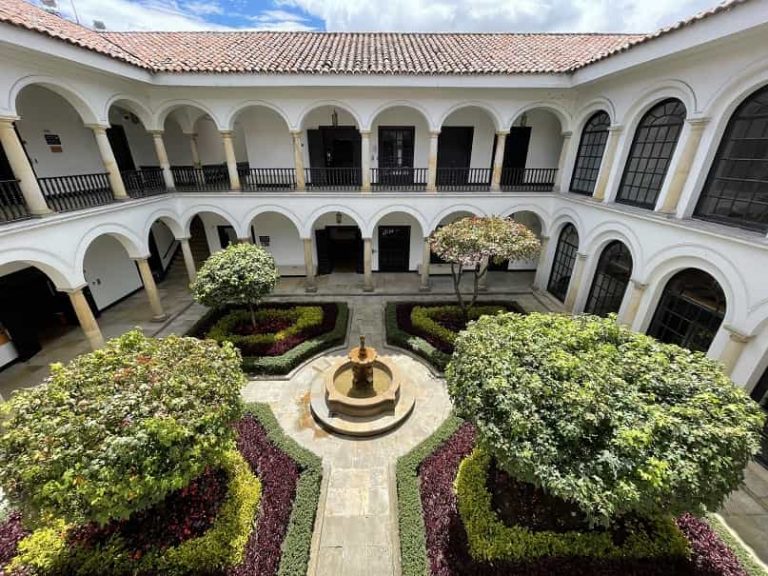
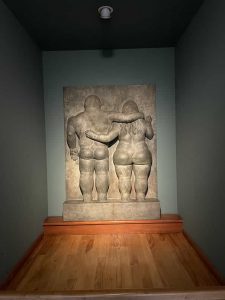
The Botero Museum and Others
After a long day of hiking and walking around, we were all ready for something a bit more low key, so we decided to visit the Botero Museum, which is located in the same complex as a museum for contemporary art and La Casa de Moneda. All of these were free, as was the Gold Museum, we only needed to make a reservation online due to limited capacity during the pandemic. None of us could think of a museum in the US of such a high caliber that is free everyday to everyone.
The Botero Museum itself was beautiful. Two floors of rooms arranged around a courtyard. Each and every piece of artwork in the museum was donated by Botero, which is mindboggling because in addition to the large number of Boteros, it is home to a few Picassos, a Dali, and dozens of other works by super famous artists. We all thoroughly enjoyed Botero’s collection and the other connected museums. Below are some of placards from La Casa de Moneda.
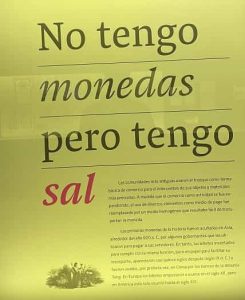

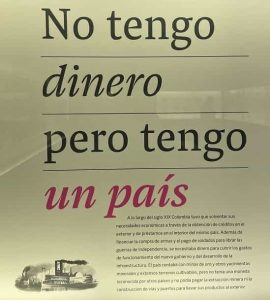
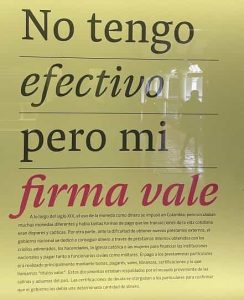
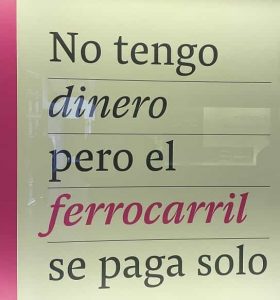
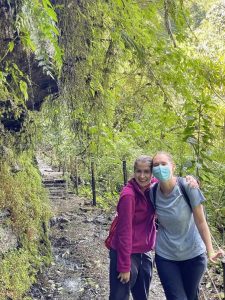
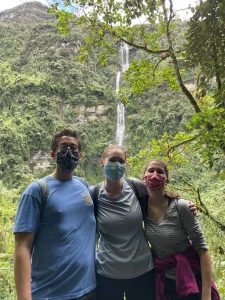
Cascada La Chorrera
After some rest, we were ready for another outdoor adventure with our tour guide, Luis. This time we went to the tallest waterfall in Colombia, Cascada La Chorrera, not too far outside of Bogotá.
On the drive there, we were met with views of mountain valleys curving into forests, cow pastures, and clear skies. The hike to a main waterfall felt like a pilgrimage to a special place. Seeing it in the distance and then several more times as we approached felt oddly satisfying, like clear progress towards a tough goal. It called us, reminding us that it was worth the effort we were putting in at 8800 some feet above sea level. When we arrived, it rewarded us with the pure sounds of crashing water, embracing us in its misty aura.
It was a hard, 5.5 mile hike with a lot of climbing, but it was worth the effort. At the end of the trail we had lunch at a small Cuban restaurant on the side of the hill overlooking the valley. It was beautiful. That night, we all slept well.


Relaxing
After a strenuous few days, we spent some time relaxing and eating good food. We went to the Usaquén flea market to pick up some souvenirs, hung out for a day reading at el Parque Simón Bolívar, walked around, and just generally enjoyed the city.
Her last day with us was Catherine’s birthday so we got some great treats at Templo de Té before sending her off to the airport. Thanks for coming to visit us! And for any of our friends out there reading this, come see us! We have lots more to see and do here and we’d love someone to share those experiences with us.
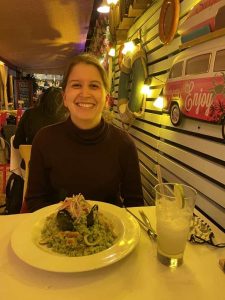
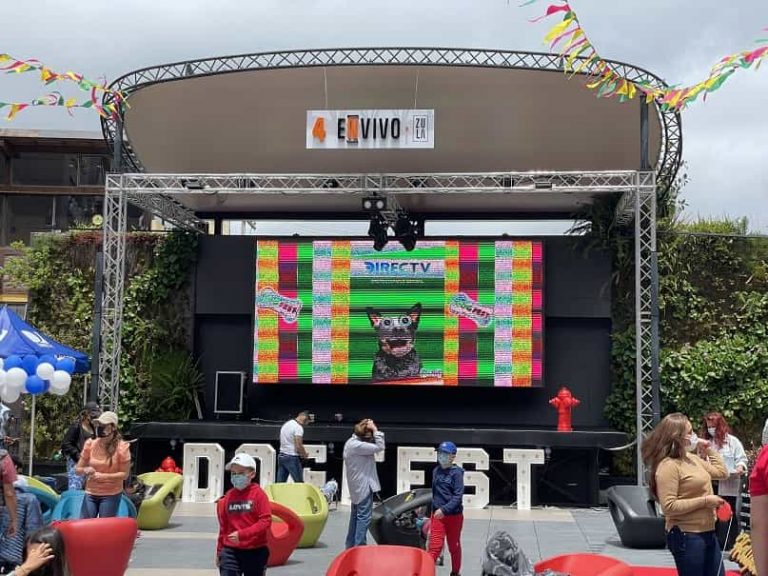
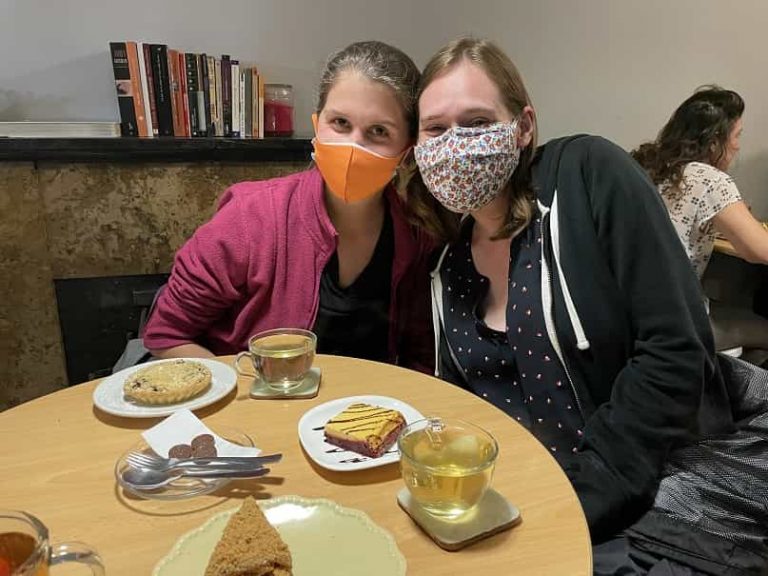
One Response
Exciting adventures!